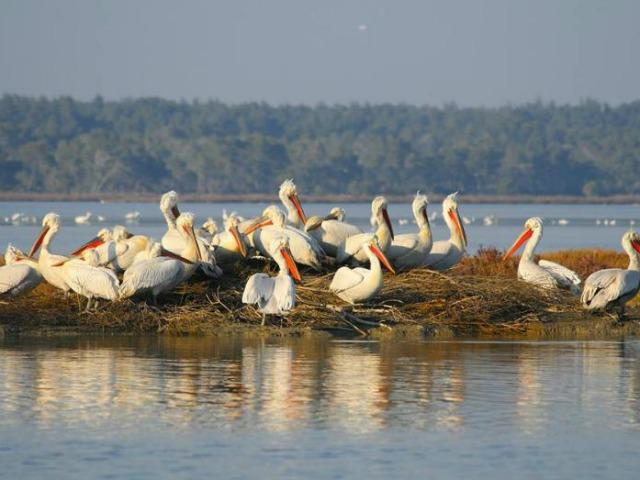

Albania Shifts Hopes From Hunting to Tourism

Albania Shifts Hopes From Hunting to Tourism - 2016-05-25
Bird-watching and wildlife tours in Adriatic Sea lagoons have drawn international tourist attention after a government ban on hunting.
Bird-watching and wildlife tours in Adriatic Sea lagoons have drawn international tourist attention after a government ban on hunting.
The Albanian government has recently repurposed Karavasta Lagoon in Divjake National park. The largest lagoon in Albania, Karavasta was until recently closed to the general public. Situated about 90km south of Tirana on the Adriatic shore, Karavasta has been off-limits for years.
Military property during the communist era, Karavasta Lagoon was patrolled by the authorities who feared Albanians would use it as a route to escape the country.
Karavasta later became infamous for playing home to criminal gangs. The marks of that era are still present in the lagoon, where marble signs holding the name of those killed can be found in the park.
In recent years Divjake has contributed to the Albanian economy by hosting tourists who came to hunt its abundant birds and other wildlife. Hunting, much of it illegal, brought income to the region while damaging the wetland’s fragile ecology and threatening populations of endangered birds and other wildlife.
That era came to an end in March 2014 when the Albanian government temporarily banned hunting throughout the entire country, arguing that the ban was necessary to protect Albania’s wildlife.
The first hunting moratorium was for just two years, but a new bill is on the way, renewing the ban for an additional five years.
Taulant Bino, who runs the Albanian Ornithological Society, told BIRN that banning hunting was a necessary step in preserving and rebuilding the country's damaged fauna populations after long years of irresponsibility and neglect.
A new industry emerges
In hunting’s wake, a new tourism industry appears to be taking root: birdwatching.
In April 2016, AOS worked with a local tour operator to organize a tour for foreigners with an interest in the area’s wildlife. A group of 16 people from Eng land spent a week bird-watching and exploring fauna in Karavasta and at Narta Lagoon, another of Albania’s important wetlands.
"We had very good feedback and additional requests for the tour,” says Bino. "I believe that the area has a huge potential in creating a new touristic identity. Activities like birdwatching and wildlife discovery can easily be developed. Historical and cultural aspects of the area can be included."
Divjake National Park is the home to 242 of Albania’s 330 native bird species. The most notable is the rare Dalmatian pelican, the largest bird in Europe. Fifty-two couples now tend their eggs on an island in the middle of Karavasta lagoon.
But there’s much more to Karavasta than pelicans.
Large flocks of white storks, flamingos, cattle egrets, little egrets, hoopoes, yellow-egged gulls, yellow wagtails, woodchat shrikes, bee-eaters, oystercatchers, Kentish plovers and more are found in the area.
A passionate ornithologist, Bino believes that this rich variety will lead to a steady stream of tourists, generating income for local residents and leading the country to invest more in protecting the environment.
"These kinds of activities have the potential to add value and give Albanian tourism an important new dimension," Bino said.
Source: BalkanInsight
http://www.balkaninsight.com/en/article/albania-shifts-hopes-from-hunting-to-tourism-04-28-2016







